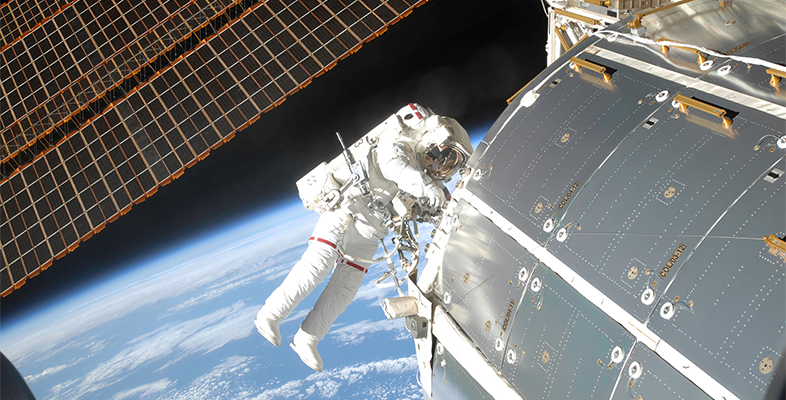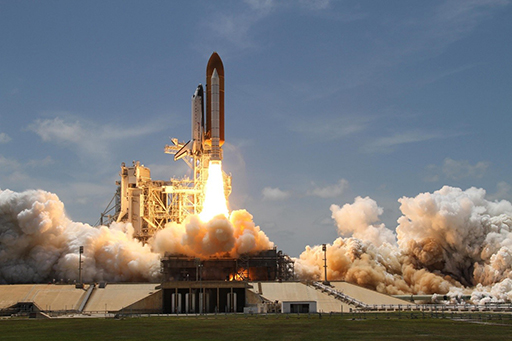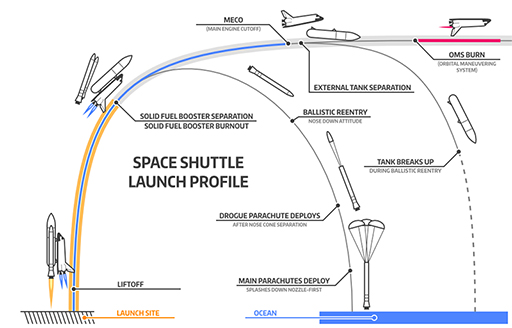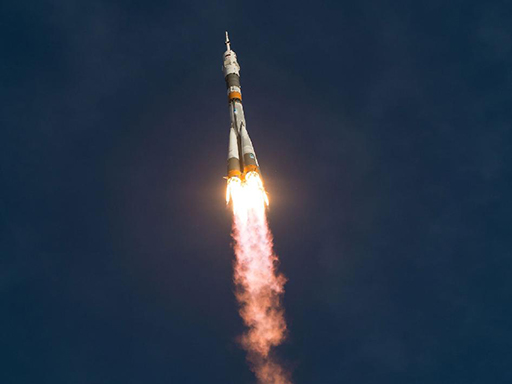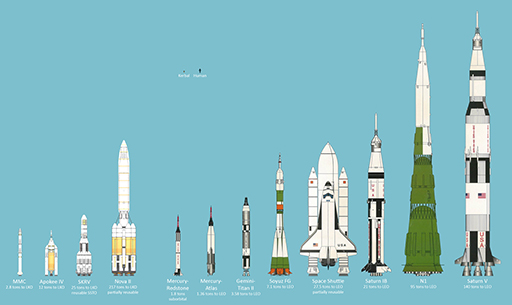3 How astronauts get up there
Astronauts first need to get into space – but how? Obviously, a powerful rocket is needed. In the 1960s, the rocket that sent men to the Moon – Saturn V (Five) – was the most powerful machine ever built (Figure 6).
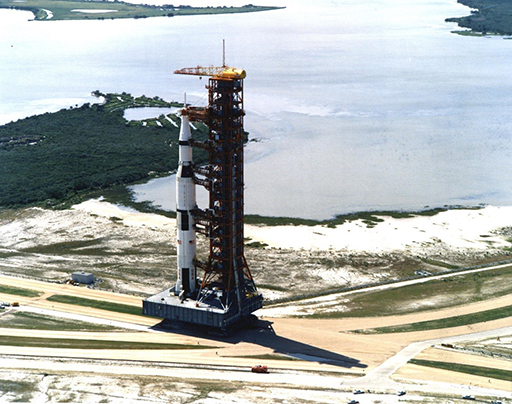
Between 1981 and 2011, NASA then sent astronauts to space using the Space Shuttle Program (Space Transportation System) (Figure 7).
The Space Shuttle was invaluable in building the ISS and the Hubble Space Telescope. It flew for 135 missions and was launched from the Kennedy Space Center in Florida, USA. Space Shuttles docked with the Russian Space Station, Mir, nine times and visited the ISS 37 times. A total of 355 people representing 16 countries flew on the Shuttle. Unfortunately, Challenger and Columbia had catastrophic accidents, leading to the deaths of 14 astronauts. Take a look at this full list of Space Shuttle missions [Tip: hold Ctrl and click a link to open it in a new tab. (Hide tip)] .
Figure 8 shows the Space Shuttle launch profile as it lifts off and the external fuel tanks separate, returning to Earth. You will consider how recent developments have changed this ‘launch profile’ later in Week 8.
Since the Space Shuttle was retired in 2011, the only way to get to the ISS now is on the Soyuz rocket from the Russian Mission Control Centre in Kazakhstan (Figure 9).
How do all these rockets compare by size? You can see from Figure 10 that the Saturn V rocket is still the tallest.
